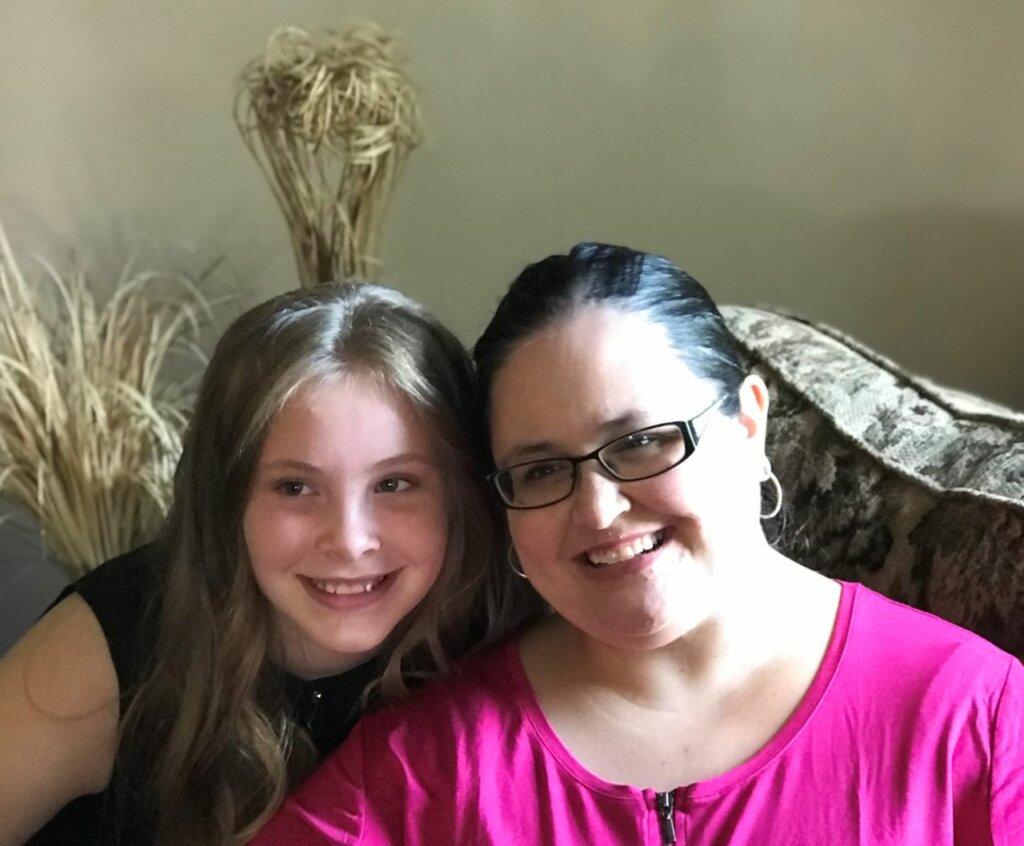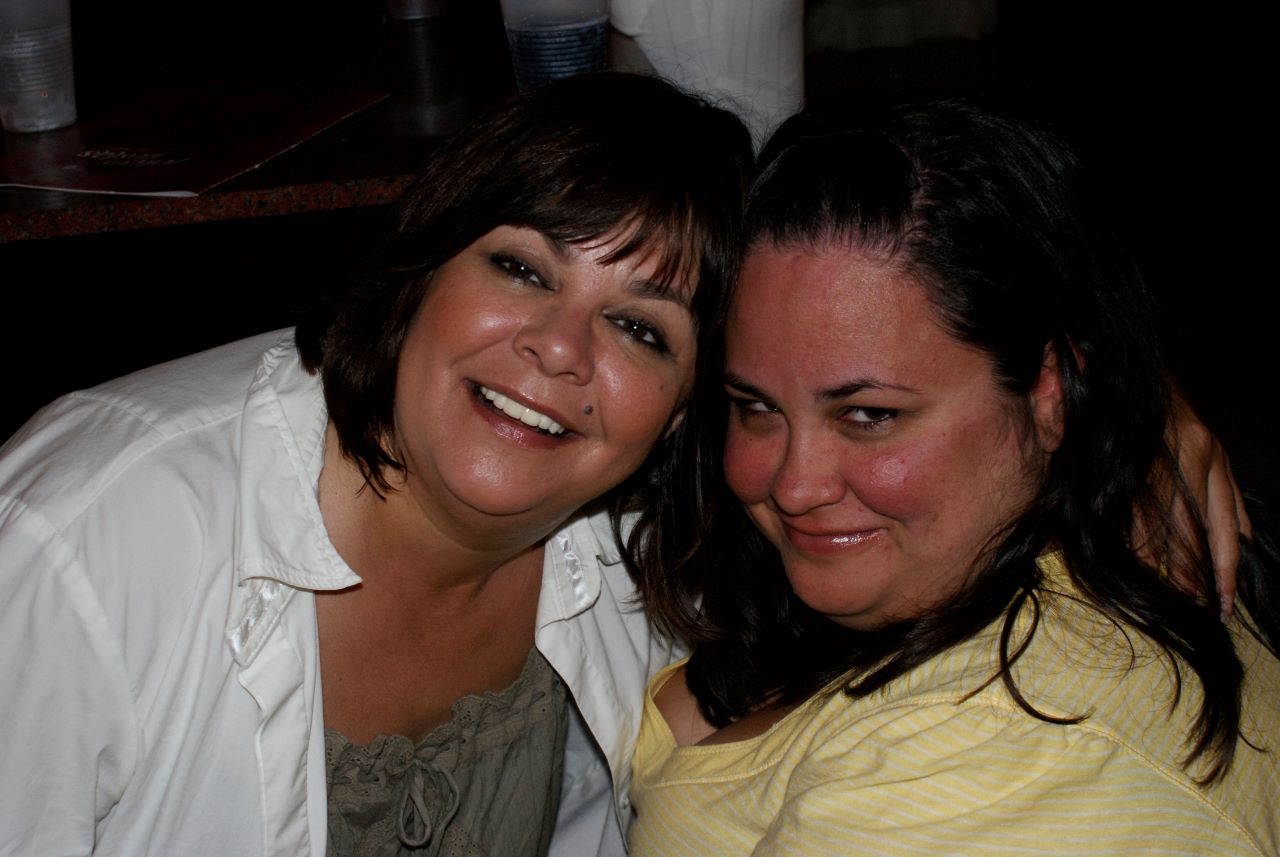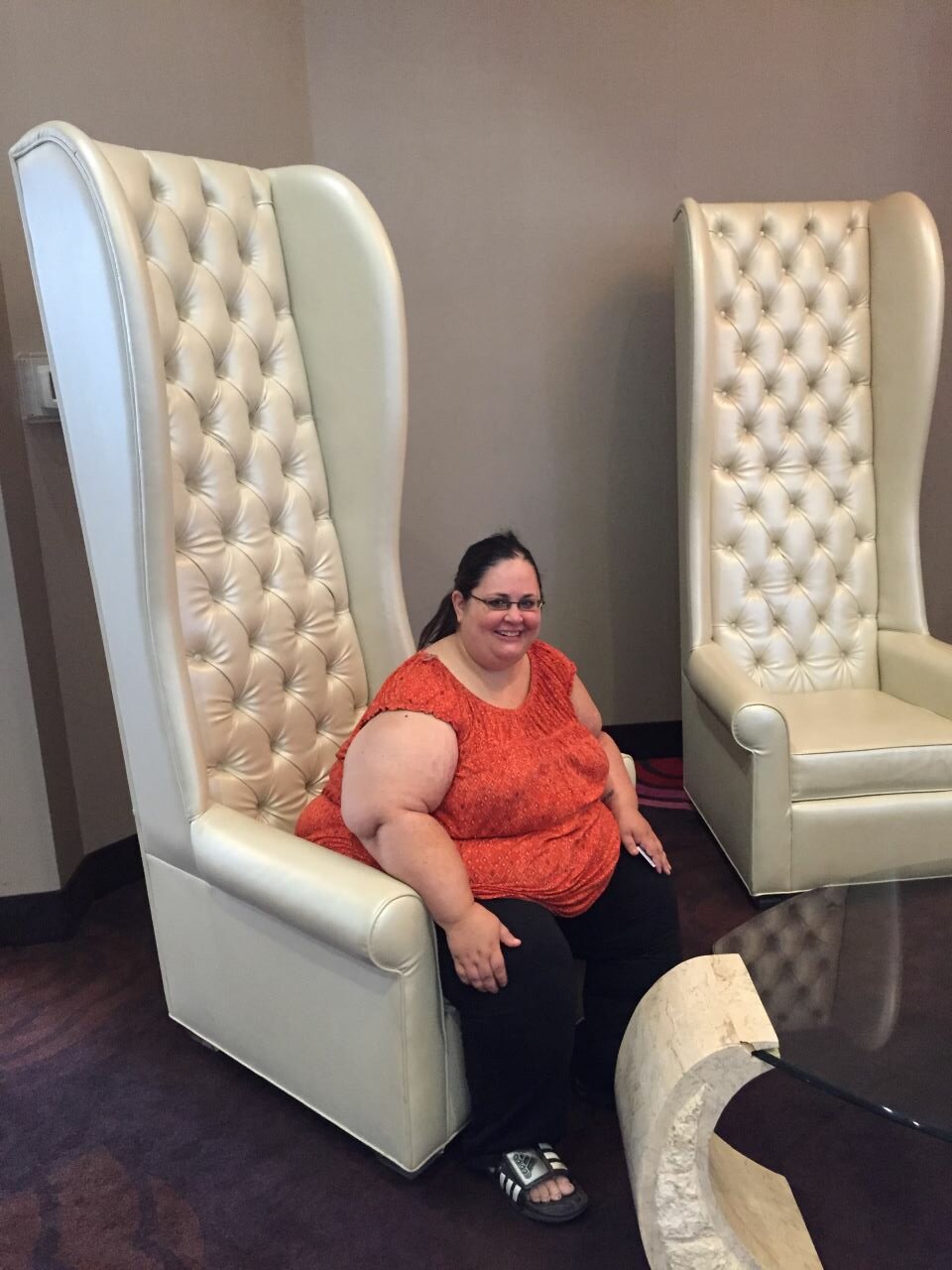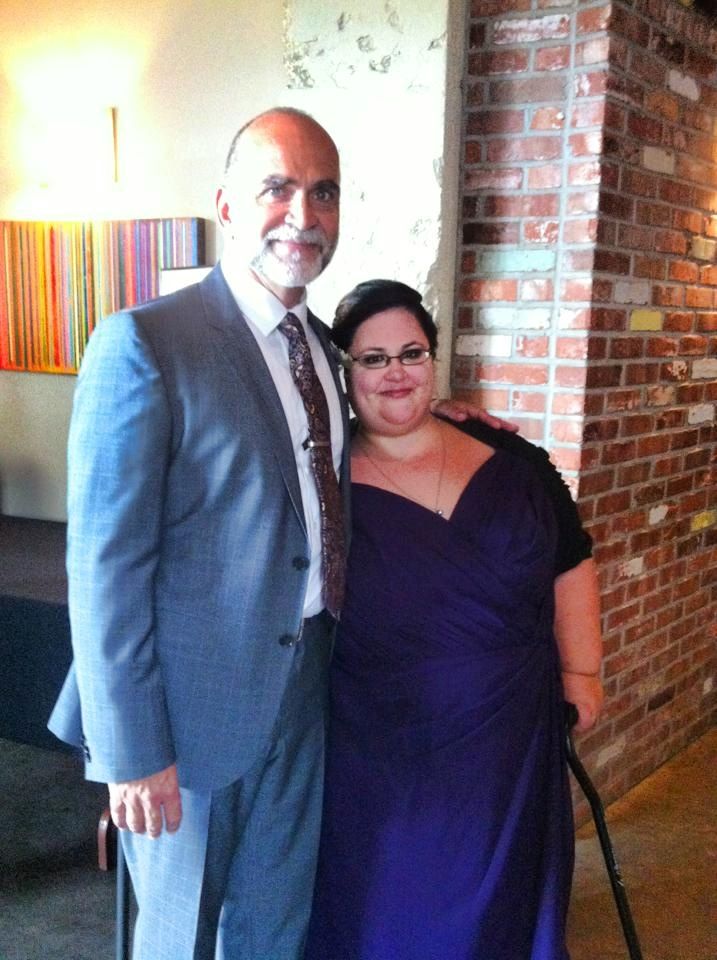
From Headaches to Healing
Lyndsay Horrigan was getting regular headaches, to the point they were becoming her normal.
As an assistant executive housekeeper at a hotel in Edmonton, Alta., and mom to then-four-year-old, Olivia, Lyndsay’s headaches began interrupting her job and her family life.
It was during a lunch date with her dad and sister that Lyndsay’s headaches became too much to bear, as she seemingly lost her peripheral vision and didn’t feel she could drive home.
“I had to ask my sister to drive,” Lyndsay says. “Once I got home, I went to lay down. When I got up, the pain was excruciating.”
Hospital visit after hospital visit
Her family took her to the emergency room, where she received pain medication. This cycle repeated four times in one weekend—emergency room visit, pain medication, home—before Lyndsay decided to see an eye doctor about her sudden loss of peripheral vision.
The eye doctor recommended that Lyndsay get checked out at Edmonton’s Royal Alexandra Hospital. She called ahead to ensure Lyndsay would have a field vision test, as well as a CT scan.
Lyndsay’s “other dad” drove her to the hospital, where her dad met up with them. With her family rallying behind her, Lyndsay received the news that she had a mass on her brain.
“At that point, it was like the world fell out from under me.”
“I looked at my other dad and he looked old, instantly,” Lyndsay says. “When I looked at my dad, he stood up and grabbed my shoulders.”
Lyndsay was admitted to the hospital, where she was given a steroid to help with the swelling in her brain.
“Almost instantly, my headache was gone,” Lyndsay says.
Learning her diagnosis
 She met with a neurosurgeon the next day, who believed Lyndsay had a craniopharyngioma tumour. Typically non-malignant, this type of tumour can sometimes grow aggressively, and Lyndsay’s was growing on her hypothalamus—the part of the brain that produces hormones to control important functions like body temperature, heart rate, mood, hunger, blood pressure, and sleep.
She met with a neurosurgeon the next day, who believed Lyndsay had a craniopharyngioma tumour. Typically non-malignant, this type of tumour can sometimes grow aggressively, and Lyndsay’s was growing on her hypothalamus—the part of the brain that produces hormones to control important functions like body temperature, heart rate, mood, hunger, blood pressure, and sleep.
“He said that is a part of the brain he doesn’t mess with,” Lyndsay says, of the neurosurgeon, “but he said he was going to do his best. It just seemed like if you were going to have someone playing around in your head, you wanted it to be him.”
The neurosurgeon pointed out that there were two parts to Lyndsay’s tumour: a solid part and a cyst-like part. The surgery, which was to be transsphenoidal (through the nose), was booked for 10 days later—February 18, 2010.
“I started making phone calls, because I had to make arrangements for my daughter,” Lyndsay says. “I was trying not to tell her too much. I had to call my sister at work and ask her to be with my daughter, so my mom could be with me. My family really pulled together to help out.”
Lyndsay continued her steroid medication leading up to her surgery, which she says led to very rapid weight gain.
“My face looked like my skin could pop,” Lyndsay says. “It was so full.”
Smiling through it
Her daughter, who knew Lyndsay had been having headaches, was, understandably, worried about her mom.
“It got to the point where I had to tell her what was going on,” Lyndsay says. “I told her they found out why I’d been getting headaches and the doctor was going to fix it.”
Olivia was happy with that explanation, in turn telling her babysitter that “the doctors found out why Mom is having headaches and they’re going to fix her, and that a doctor with a really big finger is going to pick her nose,” Lyndsay laughs. “I thought, ‘If that’s what’s going to help her, that’s great.’”
Olivia met the resident doctor who had been attending to Lyndsay during a visit to the hospital, which was another comical experience.
“When he stuck out his hand to shake hers, she just stared at his fingers,” Lyndsay says.
Dealing with complications
 Lyndsay’s neurosurgeon was not able to remove the entirety of her tumour during the surgery, due to its location on her hypothalamus. Afterwards, she was instructed to stay on her back, with very little movement for 24 hours. Her doctors were hopeful that her body would absorb the cerebral spinal fluid, which can sometimes leak following transsphenoidal surgery.
Lyndsay’s neurosurgeon was not able to remove the entirety of her tumour during the surgery, due to its location on her hypothalamus. Afterwards, she was instructed to stay on her back, with very little movement for 24 hours. Her doctors were hopeful that her body would absorb the cerebral spinal fluid, which can sometimes leak following transsphenoidal surgery.
Another complication threw Lyndsay for a loop as she recovered in hospital.
“I began to get severe headaches again and I was just not feeling well,” says Lyndsay. “I remember one night, asking the nurses to call my parents. I was vomiting and I just knew something was wrong. My parents came to the hospital and my dad was standing there as I came out of the bathroom, right before I fell. I don’t remember what happened after that, besides what my parents and the doctors told me.”
Lyndsay had contracted E. coli meningitis, making her recovery that much more difficult. Once the infection cleared, Lyndsay received a shunt to help rid her body of the cerebral spinal fluid it had not absorbed.
After a two-month hospital stay, Lyndsay was given the okay to go home and start radiation treatments. Yet, she hit another hurdle as the cyst portion of her tumour had refilled, only two weeks following her hospital release.
“My vision started to go again,” Lyndsay recalls. “I knew right away that the fluid had come back.”
Lyndsay was sent for a CT scan, which confirmed her suspicion. She was admitted back to the hospital, where she underwent a craniotomy to replace her shunt.
“My first shunt was supposed to be the Cadillac of shunts,” Lyndsay says, “but, it didn’t work for me. My intracranial pressure was too high. So, they took out the ‘big kahuna’ shunt, which was digital, and gave me the standard ‘Toyota’ shunt, as my surgeon called it.”
Finding her new normal
Lyndsay started radiation following her second operation, finishing her treatment on June 18, 2010—exactly four months after her first operation. The radiation seemed to shrink Lyndsay’s tumour, which doctors monitor through MRIs every six months. However, it also impacted her adrenal and pituitary glands, as well as her thyroid.
“I am now forever on steroids, which means the weight thing is always an issue,” says Lyndsay, who also takes other medications to balance her hormones. “Doctors told me I would never be able to lose weight on my own—that I would need medical intervention. Well, I like a challenge.”
“I decided, ‘No, that’s not how it’s going to go.”
Through watching her diet, Lyndsay lost more than 45 kg (100 lbs). Her weight loss was hard to maintain through the COVID-19 pandemic, Lyndsay says, and she eventually gained back some of what she’d lost.
“It was a constant, raging hunger,” Lyndsay says. “Because of where my tumour was, I lost my hunger control. I also lost my temperature gauge. My surgeries and radiation put me through instant menopause.”
Lyndsay explains feeling extremely tired, where she could sleep the day away.
“If I woke up on my own, I’d be fine,” Lyndsay says. “If somebody else woke me up, I was confused. I didn’t know where I was or how I’d got there.”
She describes a time when she told her parents she was going to the store, only for her to wake up two hours later with one of her parents banging on her car window.
“My life, during that time period, was really hard,” Lyndsay recalls. “I don’t know how my parents went through it with me. My whole family—I don’t know what I would have done without them.”
Her support system
 Lyndsay’s family from Grande Prairie, Alta., would pick up Olivia to go horseback riding at her uncle’s farm and to keep her busy, amidst the challenges Lyndsay was facing.
Lyndsay’s family from Grande Prairie, Alta., would pick up Olivia to go horseback riding at her uncle’s farm and to keep her busy, amidst the challenges Lyndsay was facing.
“Everybody tried to keep her busy and keep her distracted,” Lyndsay says, “which helped a lot, because it left my mom, dad, other dad, and sister free to be there for me.”
As much as her family was there for her during her most trying times, Lyndsay struggled with feelings of not being able to do the things she wanted to for her daughter.
“When you’re a kid, you wake up and you call for your mom and she comes and helps you,” Lyndsay says. “Knowing she had to go elsewhere for that comfort was always very hard.”
Still, Olivia never wavered in her support of her mom.
“When she was little, she would never make negative comments about me or my weight,” Lyndsay says. “It was always, ‘My mom has big skin.’”
Along with her family, Lyndsay had support from her workplace. Housekeeping staff would drop off food, with her managers making adjustments once Lyndsay returned to work three years later.
“I worked at the front desk, rather than in housekeeping, because I couldn’t do all the walking with my weight gain,” Lyndsay says. “But then, I started falling asleep at work. I woke up a few times when I dropped the phone.”
During the hotel’s renovations, Lyndsay was moved back to where she started—in the box office for a dinner theatre, which operated out of the hotel.
“I was making small mistakes that I knew I shouldn’t have been making,” Lyndsay says.
She was eventually let go, which she says was difficult, after 15 years of being employed there.
Plans to look forward to
These days, Lyndsay is focused on her health, her family, and on setting small goals for herself.
Her daughter, Olivia, graduated last year and is now working full time. She spends time at the lake with her mom and other dad, and has been known to beat them at card and board games when the weekend rolls around (she has a special affinity for Yahtzee).
Next up, Lyndsay would like to travel. She’s aiming to visit Arizona, where her uncle has a house, and Vancouver, where her sister and nephew live. Though, she’d like to take a train to the latter, as she’s never been on one before.
“That’s a dream of mine,” Lyndsay says.
Volunteering is something Lyndsay hopes to do again, having volunteered at her local hospital for five years following her high school graduation. Giving back is important to her, which she’s also done by fundraising and taking part in Brain Tumour Walks in the past. She also makes an effort to participate in Brain Tumour Awareness Month, sharing photos of herself, her friends and her family wearing grey.
Lyndsay recently picked up a new, and maybe unexpected, hobby, by returning to her former workplace—but not to work. She’s now a season-ticket holder at the dinner theatre where her working journey began, getting to enjoy the experience as a patron with her family.
With plans to look forward to and a strong support system around her, Lyndsay is hopeful for her future. She’s also incredibly grateful to have come as far as she has, and for those who have been there along the way.
“I can’t begin to thank my family—both blood and heart—for the support,” Lyndsay says. “I know what it was like for me, so I can’t imagine watching from the sidelines, unable to help. I have learned a lot through all of this and though it’s been difficult, I wouldn’t change a thing.”